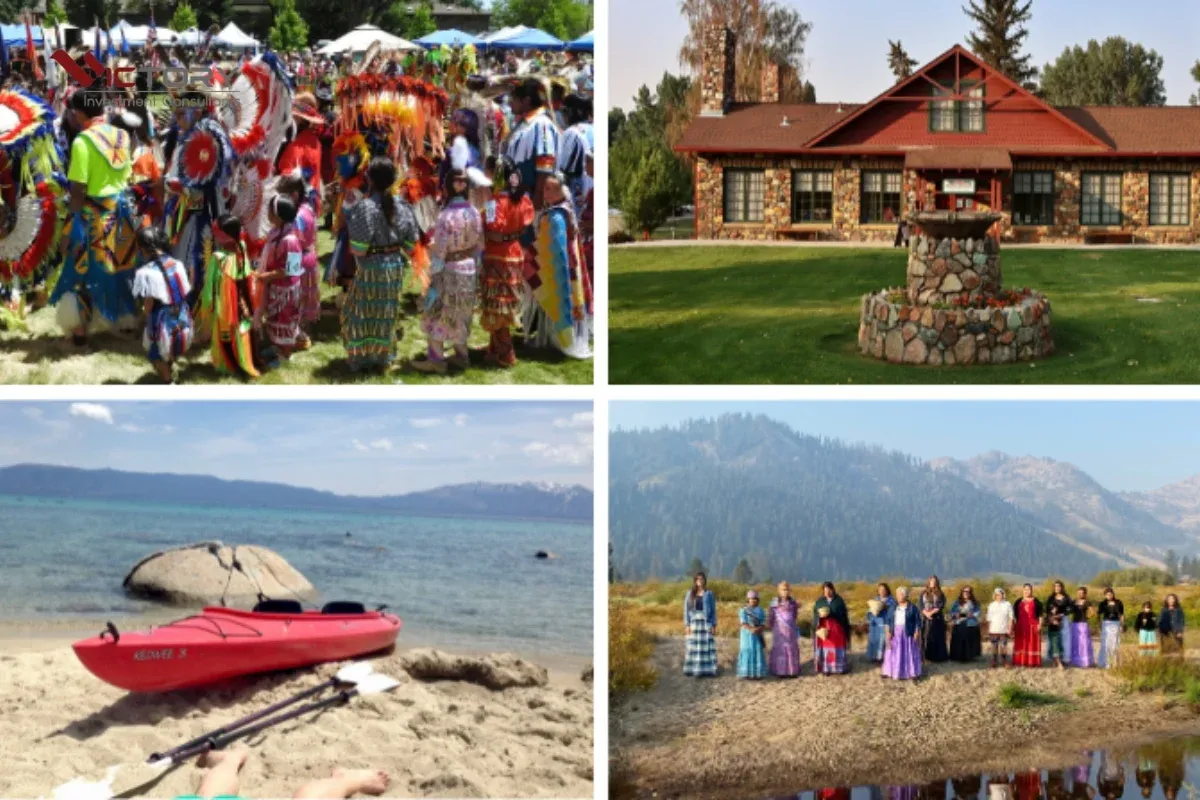Nevada, famed for the dazzling lights of Las Vegas and opulent casinos, also harbors a rich tapestry of culture and history. A vital part of this heritage lies in the traditional cuisine of its Native American tribes, who have inhabited this land for millennia. Join “Du lịch khắp thế gian” (Travel the World) on a unique culinary journey, where each dish tells a story of connection with nature and profound cultural values.
The cuisine of Nevada’s Native American tribes is more than just sustenance; it’s an integral part of their spiritual and social life. Dishes prepared from natural ingredients reflect a deep understanding of the environment and a harmonious way of life with nature.
Culinary Footprints of Nevada Tribes
Native American tribes in Nevada, including the Paiute, Shoshone, Washoe, and others, developed a unique food system based on resources available in the harsh desert and mountain environment. They were skilled hunter-gatherers, adept at maximizing nature’s bounty.

Ingredients from Nature
Wild Plants: Plants like pinyon pine, sage, and various herbs were not only vital food sources but also used in traditional medicine. Pinyon nuts, rich in fats and protein, were a staple food, harvested in the fall. Berries and roots were also widely used.
Hunted Animals: Rabbits, deer, squirrels, and birds were primary protein sources. Hunting skills were passed down through generations, and every part of the animal was used, from meat to hide and bones.
Fish and Seafood: Near rivers and lakes, tribes also fished and gathered other seafood. Salmon, whitefish, and crayfish were popular dishes.
Traditional Cooking Methods
Nevada Native Americans employed diverse and creative cooking methods, reflecting adaptation to their environment and available resources.
Roasting: Meat was often roasted over hot coals or in earth ovens, preserving its natural flavor and moisture.
Drying: To preserve food for extended periods, meats and berries were often dried under the sun. This method was crucial for preparing for harsh winter months.
Grinding: Seeds and grains were ground into flour for making bread or soups. Grinding stones were used to meticulously grind seeds, producing fine and fragrant flour.
Signature Dishes of Nevada Tribes
Each tribe in Nevada has its own distinctive dishes, reflecting the diversity in their culture and living environments. Here are a few notable examples:
Navajo Taco: A Cultural Fusion
Navajo Taco is a popular dish in the cuisine of the Navajo people, a Native American tribe residing in the Southwestern United States, including Nevada. This dish is a fusion of Navajo frybread and familiar taco ingredients like beef, beans, lettuce, tomatoes, and cheese.

Frybread is made from flour, salt, sugar, and yeast, then deep-fried until golden brown and crispy. The crispy bread combined with savory taco fillings creates a satisfying and hearty dish. Navajo Taco is not just a delicious meal but also a symbol of the Navajo people’s resilience and creativity in adapting to changing times.
Pinyon Pine Nuts: Gift from the Pine Forest
Pinyon nuts are a vital and highly nutritious food source for Nevada tribes. They are harvested from pinyon pine trees, a species characteristic of the Western US mountains. Pinyon nut harvesting is an important community event, typically occurring in the fall.
Pinyon nuts can be eaten raw, roasted, or used in various dishes. They have a rich, buttery flavor and are high in protein, fats, and minerals. Pinyon nuts are not only a delicious food but also an integral part of Nevada tribes’ culture and economy.
Basque Chateaubriand: Influence from the Basque Community
While not a traditional Native American dish, Basque Chateaubriand is a significant part of Nevada’s cuisine, especially in areas with Basque communities. This dish is a thick cut of beef tenderloin, grilled or pan-fried, and often served with vegetables and special sauces.
The Basque community brought unique cooking techniques and flavors to Nevada, enriching the state’s culinary landscape. Basque Chateaubriand exemplifies cultural exchange and diversity in Nevada’s food scene.
Other Dishes
Beyond the dishes mentioned, Nevada tribal cuisine includes many others, such as:
- Herb and Root Soups: Made from wild herbs and roots gathered from nature, believed to be restorative and medicinal.
- Roasted Rabbit: Rabbit meat roasted over hot coals or in earth ovens, retaining its natural flavor and moisture.
- Cornmeal Bread: Cornmeal ground finely and mixed with water to make bread, then baked on hot stones.
Preserving and Promoting Culinary Heritage
Today, many organizations and individuals are working to preserve and promote the culinary heritage of Nevada tribes. Educational projects, cooking classes, and cultural events are organized to introduce traditional dishes and the stories behind them to the public.

Preserving and promoting culinary heritage not only helps maintain traditional cultural values but also contributes to community-based tourism and creates economic opportunities for tribes. Simultaneously, it raises awareness about the importance of environmental protection and living in harmony with nature.
Conclusion
The journey to discover the cuisine of Nevada’s Native American tribes is an exciting and meaningful adventure. From natural ingredients to traditional cooking methods, each dish tells a story of connection with nature, resilience, and human creativity. Join “Du lịch khắp thế gian” (Travel the World) to continue exploring the unique cultural and culinary beauty of Nevada and around the globe!